A 1946 nickel typically values between $0.10-$2.00 in circulated condition, while uncirculated examples range from $5-$10. High-grade uncirculated coins with “Full Steps” can fetch $1,700-$8,800+. The coin comes in three varieties: no mint mark (Philadelphia), “D” (Denver), and “S” (San Francisco). Values are similar across all mint marks, with condition being the primary value determinant. Major error varieties are uncommon for 1946 nickels, making grade and preservation the most significant factors affecting worth. The “Full Steps” designation on the reverse Monticello design commands premium prices among collectors.
That old 1946 nickel sitting in your drawer might be worth more than five cents. While most circulated examples trade for modest sums, certain specimens—particularly those with sharp details or rare errors—can command prices exceeding $8,000. The difference between a common piece and a valuable collectible often comes down to mint mark location, strike quality, and specific manufacturing anomalies that occurred during production.
Understanding the 1946 Jefferson Nickel Basics
The 1946 Jefferson nickel marked the first peacetime production year after World War II, when the U.S. Mint returned to the standard copper-nickel composition. During the war years (1942-1945), these five-cent pieces contained 35% silver due to nickel’s strategic importance for military applications. The 1946 issue resumed the traditional 75% copper and 25% nickel blend, weighing 5 grams with a diameter of 21.2 millimeters.
Three facilities produced these coins: Philadelphia (no mint mark), Denver (D), and San Francisco (S). The mint mark appears on the reverse, to the right of Monticello. Philadelphia struck the highest quantity at 161,116,000 pieces, followed by Denver with 45,292,200, and San Francisco producing 13,560,000—making the S-mint the scarcest of the three varieties.
Value Breakdown by Mint Mark and Grade
1946 Philadelphia Nickel (No Mint Mark)
The Philadelphia issue represents the most common variant, yet certain grades achieve substantial premiums:
| Grade | Typical Value |
|---|---|
| Good (G-4) | $0.10 |
| Fine (F-12) | $0.15 |
| Extremely Fine (EF-40) | $0.35 |
| About Uncirculated (AU-50) | $1.20 |
| Mint State (MS-60) | $3.50 |
| MS-65 | $8.00 |
| MS-66 Full Steps | $1,700 |
| MS-67 Full Steps | $8,800+ |
The dramatic price jump for Full Steps designations occurs because this feature—referring to the clear, unbroken horizontal lines on Monticello’s front staircase—indicates exceptional strike quality. Heritage Auctions sold an MS-67 Full Steps 1946-P specimen for $8,812 in January 2023, demonstrating strong collector demand for pristine examples.
1946-D Denver Nickel
Denver’s production shows similar value patterns with slight variations:
| Grade | Typical Value |
|---|---|
| Good (G-4) | $0.10 |
| Fine (F-12) | $0.20 |
| EF-40 | $0.40 |
| AU-50 | $1.50 |
| MS-60 | $4.00 |
| MS-65 | $10.00 |
| MS-66 Full Steps | $2,100 |
| MS-67 Full Steps | $9,500+ |
The D-mint coins typically trade at modest premiums over Philadelphia issues in circulated grades due to the lower mintage. Stack’s Bowers documented a 2022 sale where an MS-67 Full Steps 1946-D reached $9,775, reflecting the rarity of perfectly struck Denver examples.
1946-S San Francisco Nickel
The lowest mintage makes San Francisco nickels particularly desirable:
| Grade | Typical Value |
|---|---|
| Good (G-4) | $0.15 |
| Fine (F-12) | $0.25 |
| EF-40 | $0.50 |
| AU-50 | $2.00 |
| MS-60 | $5.50 |
| MS-65 | $12.00 |
| MS-66 Full Steps | $3,200 |
| MS-67 Full Steps | $15,000+ |
San Francisco produced the fewest 1946 nickels, creating natural scarcity. In circulated condition, the premium remains minimal—perhaps an extra dime compared to Philadelphia coins. However, gem uncirculated specimens with Full Steps command the highest prices across all three mints. A PCGS MS-67 Full Steps 1946-S sold for $16,450 at a Great Collections auction in 2023.
Identifying Valuable Errors and Varieties
Full Steps Designation Explained
The Full Steps feature represents the most significant premium factor for 1946 nickels. Grading services like PCGS and NGC award this designation when five or six complete, uninterrupted horizontal steps appear on Monticello’s portico. Most 1946 nickels show weak or incomplete steps due to die wear or insufficient striking pressure, making Full Steps examples scarce.
To qualify, each step must show clear separation without merging into adjacent steps. Lighting angles matter when examining this feature—tilt the coin under a direct light source to reveal step definition. Professional Coin Grading Service estimates that fewer than 2% of 1946 nickels achieve Full Steps status across all grades.
Double Die Obverse Errors
While major double die varieties remain unreported for 1946 nickels in standard references, minor doubling occasionally appears on date digits or lettering. Examine the date numerals, “LIBERTY,” and “IN GOD WE TRUST” under 5x magnification for doubled outlines. Significant doubling would add $50 to $200 to a coin’s value depending on prominence and grade, though such examples prove extremely rare for this year.
Off-Center Strikes
Off-center errors occur when the planchet sits improperly in the collar during striking. A 10% off-center 1946 nickel with a complete date visible typically sells for $35 to $75. Examples showing 20-30% displacement can reach $100 to $250, while dramatic 50% off-center pieces with full dates have sold for $400 to $600. The key requirement: the date must remain visible for maximum value.
Clipped Planchet Errors
Clipped planchets happen when the metal strip overlaps during blank cutting, creating a curved indent on the finished coin’s edge. Straight clips (from the strip’s end) and curved clips (from overlap) both exist. A 1946 nickel with a 5-10% curved clip generally trades for $15 to $40, while larger 15-20% clips can bring $50 to $100. Straight clips typically command slightly lower premiums.
Lamination and Split Planchet Errors
The copper-nickel composition occasionally develops internal stress fractures, causing the metal to separate in layers. Minor lamination peeling adds $10 to $25 to a coin’s value. Dramatic splits where the coin separates into distinct layers can sell for $75 to $200 depending on severity. These errors resulted from impurities in the metal alloy or improper bonding during planchet preparation.
Strike Through Errors
Strike through errors occur when foreign material—cloth fibers, grease, or debris—sits between the die and planchet during striking. The resulting coin shows a raised or incused area corresponding to the obstruction’s shape. Values range from $8 for minor fiber strikes to $100+ for dramatic filled die strikes affecting significant portions of the design.
Grading Standards That Affect Your Coin’s Value
Understanding professional grading standards helps estimate your 1946 nickel’s worth accurately. The Sheldon Scale runs from 1 (barely identifiable) to 70 (perfect).
In Good (G-4) condition, Jefferson’s profile shows heavy wear with major design elements visible but flattened. The date and lettering remain legible. Market value sits at face value to $0.15.
Fine (F-12) coins display moderate circulation wear. Jefferson’s cheekbone shows some detail, and Monticello’s columns remain distinct but worn. These typically trade for $0.15 to $0.25.
Extremely Fine (EF-40) specimens retain sharp detail across most design elements. Jefferson’s hair shows individual strands above the forehead, and Monticello’s architectural features appear crisp. Values range from $0.35 to $0.50.
About Uncirculated (AU-50) coins show minimal wear limited to the highest points—Jefferson’s cheekbone and hair, plus Monticello’s roof line. Original mint luster appears in protected areas. Expect $1.20 to $2.00.
Mint State coins never entered circulation. MS-60 examples show numerous bag marks from storage contact, worth $3.50 to $5.50. MS-65 coins display minimal marks visible only under magnification, commanding $8.00 to $12.00. MS-66 and higher grades show exceptional eye appeal with virtually no imperfections—these achieve premium prices, especially with Full Steps designation.
Authentication Tips for Sellers and Collectors
Counterfeit 1946 nickels remain uncommon due to limited profit potential, but altered mint marks occasionally surface. Some unscrupulous sellers add a “D” or “S” to Philadelphia coins, hoping to claim the modest premium.
Examine the mint mark under magnification. Authentic mint marks show consistent depth and style matching the die variety. Added mint marks often appear raised, punched too deeply, or positioned incorrectly. Reference images from PCGS CoinFacts or NGC’s variety database to compare your specimen against verified examples.
Weight provides another verification method. Authentic 1946 nickels weigh 5.00 grams (±0.03 grams for tolerance). A digital scale accurate to 0.01 grams helps identify plated fakes or wrong-planchet errors. Counterfeit nickel-plated zinc pieces weigh noticeably less at approximately 3.5 to 4.0 grams.
For coins potentially worth $500 or more, professional authentication through PCGS or NGC makes economic sense. Their expert review, guarantee, and encapsulation in tamper-evident holders significantly improve marketability. Submission costs run $20 to $40 for standard service, plus shipping and insurance.
Market Trends and Where to Sell
The 1946 nickel market shows steady demand for high-grade specimens. Heritage Auctions’ annual price database indicates MS-65 examples appreciated approximately 15% from 2020 to 2024, while Full Steps coins in MS-66 and higher climbed 25-30% during the same period. Circulated examples remained stable near melt value with minimal fluctuation.
eBay provides the largest marketplace for common-date nickels. Circulated 1946 nickels in Good through Fine condition sell reliably for $0.25 to $0.75 including shipping. List with clear photographs showing both sides, the mint mark area, and any notable features. Expect 7-14 days for sales in this price range.
For uncirculated coins worth $50 to $500, consider specialized dealers like David Lawrence Rare Coins or coin shows where collectors actively seek quality material. These venues attract buyers willing to pay appropriate premiums for properly graded, problem-free examples.
High-grade Full Steps specimens exceeding $500 benefit from major auction houses—Heritage, Stack’s Bowers, Great Collections, or Legend Rare Coin Auctions. Their marketing reach to serious collectors maximizes realized prices. Typical consignment fees run 10-20% of the hammer price, but competitive bidding often recovers these costs through stronger final prices.
Building Your 1946 Nickel Collection
Assembling a complete 1946 nickel set—Philadelphia, Denver, and San Francisco in matching grades—creates an achievable collecting goal. A circulated set in Fine condition costs approximately $0.75 total, making it accessible for beginning collectors. Upgrading to Extremely Fine examples requires about $1.50, while About Uncirculated coins total around $5.00 for all three mint marks.
Advanced collectors pursue Full Steps examples or assemble registry sets through PCGS or NGC. A complete MS-65 Full Steps set would cost approximately $6,000 to $8,000 based on recent auction results, with the San Francisco issue representing the most challenging acquisition.
Error variety hunting offers another collecting approach. Building a type set of different error categories—off-center, clipped planchet, strike through, and lamination—provides educational value while remaining budget-friendly. Most error examples can be acquired for under $100 each, creating an interesting specialty collection.
Maximizing Your 1946 Nickel’s Investment Potential
Whether you’ve inherited a collection or discovered a 1946 nickel in circulation, understanding its value requires examining three critical factors: mint mark, condition, and special features like Full Steps or errors. Common circulated examples remain plentiful at face value, but gem uncirculated specimens with sharp details reward patient collectors with significant appreciation potential.
Start by identifying your coin’s mint mark—remember that no mark indicates Philadelphia production. Compare its condition against the grading standards outlined above, paying special attention to Monticello’s steps under magnification. For coins appearing to grade MS-63 or higher, professional authentication makes sense before selling. The certification costs represent money well spent when dealing with specimens potentially worth hundreds or thousands of dollars.
The 1946 nickel market favors quality over quantity. A single MS-66 Full Steps example outperforms dozens of circulated pieces as an investment, combining genuine scarcity with strong collector demand. Focus your attention on acquiring the finest examples your budget allows, and you’ll build a collection that preserves value while providing the satisfaction of owning truly exceptional numismatic pieces.
You may be interested:
- 1859 Indian Head Penny Coin Value Complete Errors List And No Mint Mark Worth Guide For Collectors
- 1911 V Nickel Coin Value Guide Complete Errors List And No Mint Mark Worth Today
- 1902 Dime Coin Value Complete Errors List With O S And No Mint Mark Worth Guide
- 1788 Quarter Coin Value Complete Guide Errors List And D S P Mint Mark Worth Revealed
- 1776 To 1976 Bicentennial Half Dollar Coin Value Complete Errors List And What Your D S And No Mint Mark Coins Are Actually Worth
- 1990 Penny Coin Value Errors List How D S And No Mint Mark Pennies Are Worth Thousands Of Dollars

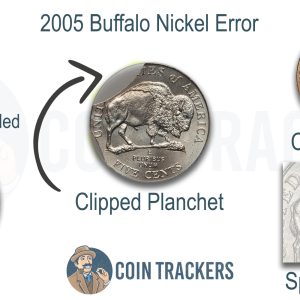
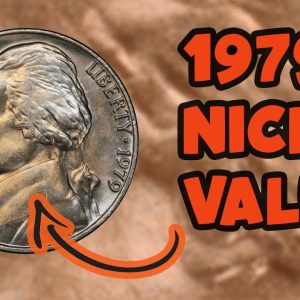
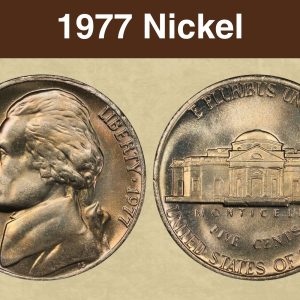
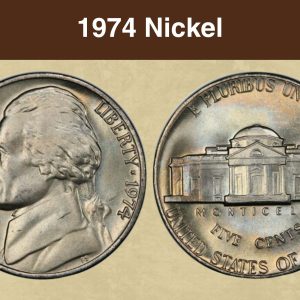
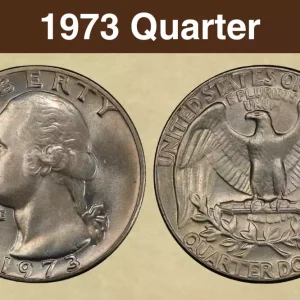
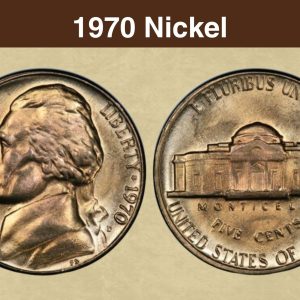
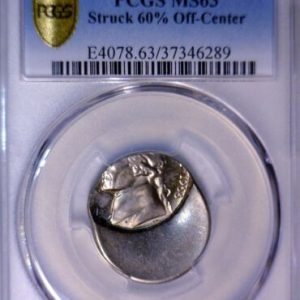
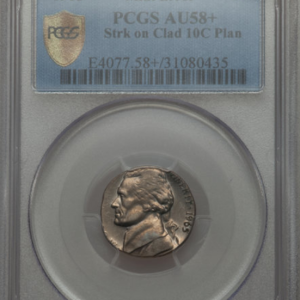
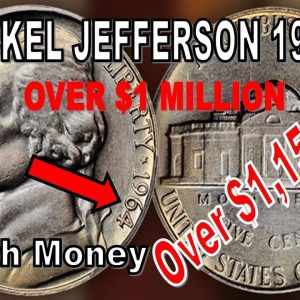
How much is a 1946 nickel worth with no mint mark?
A 1946 nickel with no mint mark is generally worth between $0.10 and $2 in circulated condition, with uncirculated versions worth $5 to $10 or more depending on their quality. Some high-grade, uncirculated examples, especially those with full steps, can be worth significantly more, potentially hundreds or even thousands of dollars at auction.
How to tell if a 1946 nickel is valuable?
They get worn down the quickest. And during the minting. Process they are the hardest area to strike. So pretty much if the coin. Has these full steps on the back and the coin is uncirculated.
What nickel error to look for?
Key nickel errors to look for include doubled dies, where design elements are doubled due to die strikes, off-center strikes, where the coin is struck outside its intended position, and mint mark errors, such as doubled or missing mint marks. Other valuable errors are speared bison on 2005 nickels, the 1943 double die Jefferson nickel, and 1937-D Buffalo nickel three legs.
Where should the mint mark be on a 1946 nickel?
In 1946, when use of the standard copper-nickel alloy resumed for the Jefferson Nickel, mint marks on returned to their former spot just to the right of Monticello.